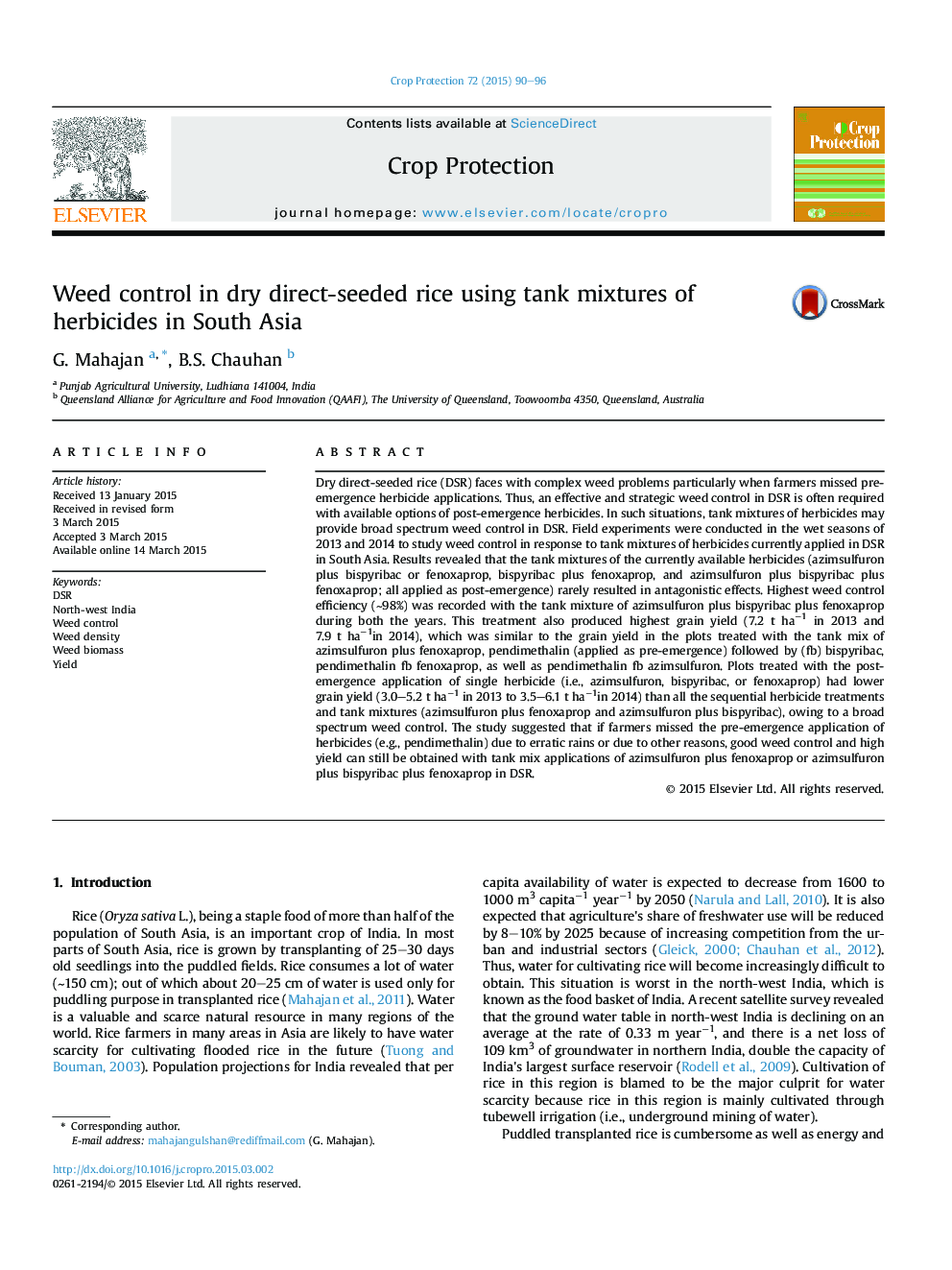| کد مقاله | کد نشریه | سال انتشار | مقاله انگلیسی | نسخه تمام متن |
|---|---|---|---|---|
| 6373435 | 1624315 | 2015 | 7 صفحه PDF | دانلود رایگان |
- Effective and strategic weed control in dry direct-seeded rice (DSR) is needed.
- A sequential application of herbicides (PRE and POST) is effective in DSR.
- High yield in DSR is possible with the tank mix application of post-emergence herbicides.
- Tank mix applications of herbicides help in curtailing the dose of herbicides in DSR.
- Tank mixing provides greater flexibility in timing of the herbicides application in DSR.
Dry direct-seeded rice (DSR) faces with complex weed problems particularly when farmers missed pre-emergence herbicide applications. Thus, an effective and strategic weed control in DSR is often required with available options of post-emergence herbicides. In such situations, tank mixtures of herbicides may provide broad spectrum weed control in DSR. Field experiments were conducted in the wet seasons of 2013 and 2014 to study weed control in response to tank mixtures of herbicides currently applied in DSR in South Asia. Results revealed that the tank mixtures of the currently available herbicides (azimsulfuron plus bispyribac or fenoxaprop, bispyribac plus fenoxaprop, and azimsulfuron plus bispyribac plus fenoxaprop; all applied as post-emergence) rarely resulted in antagonistic effects. Highest weed control efficiency (â¼98%) was recorded with the tank mixture of azimsulfuron plus bispyribac plus fenoxaprop during both the years. This treatment also produced highest grain yield (7.2 t haâ1 in 2013 and 7.9 t haâ1in 2014), which was similar to the grain yield in the plots treated with the tank mix of azimsulfuron plus fenoxaprop, pendimethalin (applied as pre-emergence) followed by (fb) bispyribac, pendimethalin fb fenoxaprop, as well as pendimethalin fb azimsulfuron. Plots treated with the post-emergence application of single herbicide (i.e., azimsulfuron, bispyribac, or fenoxaprop) had lower grain yield (3.0-5.2 t haâ1 in 2013 to 3.5-6.1 t haâ1in 2014) than all the sequential herbicide treatments and tank mixtures (azimsulfuron plus fenoxaprop and azimsulfuron plus bispyribac), owing to a broad spectrum weed control. The study suggested that if farmers missed the pre-emergence application of herbicides (e.g., pendimethalin) due to erratic rains or due to other reasons, good weed control and high yield can still be obtained with tank mix applications of azimsulfuron plus fenoxaprop or azimsulfuron plus bispyribac plus fenoxaprop in DSR.
Journal: Crop Protection - Volume 72, June 2015, Pages 90-96
